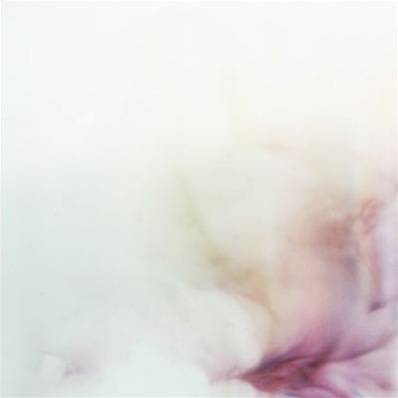Futoshi Miyagi
04 Nov - 09 Dec 2006
FUTOSHI MIYAGI
Brief Procedures
November 4 - December 9, 2006
Daniel Reich Gallery is very pleased to present a debut exhibition of photography and sculpture by Futoshi Miyagi.
Miyagi’s practice involves a strong subtle conceptual base incorporating personal and emotional concerns in artworks whose resonance extends beyond the conventional boundaries of either conceptual or romantic art. His artwork also transcends the art object itself stimulating the viewer’s imagination.
Influenced by the romanticism of Boston School photography and its emphasis on intimate narrative, Miyagi’s photographs suggest an intimate portrait of a couple in a domestic setting. The acquaintance process involves the intermediary of a networking website, or more directly a trip to a gay bar, and results in a controlled composition using the embellishments of the sitter’s home to create a scene suggesting domestic life. In this way, Miyagi opens the door to a world of possibilities while addressing his self-admitted shyness. As a gay male from Okinawa in Japan, Miyagi is confronted with a de facto excommunication from his homeland, while conducting an ongoing observation of his place within the American cultural frame. In situating himself in the homes of other men, one could see his practice as an attempt at “homecoming” if we leave the term open to variable interpolation. As Quentin Crisp in The Naked Civil Servant searched endlessly for “the great dark man” while accepting second best to pass time, perhaps regardless of gender or sexuality, one aspires to a homecoming of sorts and perhaps this is a place where the resonance of Miyagi’s photographic search can be found. In this regard, it might also be noted that Jean Genet, an orphan, was known to find comfort inserting himself in the beds of his heterosexual patrons.
Concepts of erasure, intimacy and maturation are also relevant, and his art making practice is at times therapeutic in this respect. This conscious tendency to consider his life a “work in process” conceptually translates into works whose after effect is infused with ache and longing but also aspiration in the ambiguity of discarding memory and identity (as in a bleached self portrait shown in stages where the struggle to situate the self becomes immaterial bringing us back to the white page with openness for inscription). And yet the violence of the bleaching chemical resonates. Erasure coincides with a more practical attempt to belong to a group without compromising the most essential aspects of personality.
While Miyagi’s photographs possess a richness in the details of his environment, his sculptures pose an aesthetic reversal: presenting minimal bare relics on which to rest anecdotal memory of things past infused with violence. For instance, a jar filled with chocolate Teddy Grahams decapitated with the teeth is associated with the memory of a cicada whose wings Miyagi tore off so that it wouldn’t fly away from him. As the artist writes as an adult, “The memories of one’s innocent childhood can be suffocating, the days that seemed to go on forever.”
Brief Procedures
November 4 - December 9, 2006
Daniel Reich Gallery is very pleased to present a debut exhibition of photography and sculpture by Futoshi Miyagi.
Miyagi’s practice involves a strong subtle conceptual base incorporating personal and emotional concerns in artworks whose resonance extends beyond the conventional boundaries of either conceptual or romantic art. His artwork also transcends the art object itself stimulating the viewer’s imagination.
Influenced by the romanticism of Boston School photography and its emphasis on intimate narrative, Miyagi’s photographs suggest an intimate portrait of a couple in a domestic setting. The acquaintance process involves the intermediary of a networking website, or more directly a trip to a gay bar, and results in a controlled composition using the embellishments of the sitter’s home to create a scene suggesting domestic life. In this way, Miyagi opens the door to a world of possibilities while addressing his self-admitted shyness. As a gay male from Okinawa in Japan, Miyagi is confronted with a de facto excommunication from his homeland, while conducting an ongoing observation of his place within the American cultural frame. In situating himself in the homes of other men, one could see his practice as an attempt at “homecoming” if we leave the term open to variable interpolation. As Quentin Crisp in The Naked Civil Servant searched endlessly for “the great dark man” while accepting second best to pass time, perhaps regardless of gender or sexuality, one aspires to a homecoming of sorts and perhaps this is a place where the resonance of Miyagi’s photographic search can be found. In this regard, it might also be noted that Jean Genet, an orphan, was known to find comfort inserting himself in the beds of his heterosexual patrons.
Concepts of erasure, intimacy and maturation are also relevant, and his art making practice is at times therapeutic in this respect. This conscious tendency to consider his life a “work in process” conceptually translates into works whose after effect is infused with ache and longing but also aspiration in the ambiguity of discarding memory and identity (as in a bleached self portrait shown in stages where the struggle to situate the self becomes immaterial bringing us back to the white page with openness for inscription). And yet the violence of the bleaching chemical resonates. Erasure coincides with a more practical attempt to belong to a group without compromising the most essential aspects of personality.
While Miyagi’s photographs possess a richness in the details of his environment, his sculptures pose an aesthetic reversal: presenting minimal bare relics on which to rest anecdotal memory of things past infused with violence. For instance, a jar filled with chocolate Teddy Grahams decapitated with the teeth is associated with the memory of a cicada whose wings Miyagi tore off so that it wouldn’t fly away from him. As the artist writes as an adult, “The memories of one’s innocent childhood can be suffocating, the days that seemed to go on forever.”

